In the quest for a sophisticated living environment, the allure of high design often intertwines with the calming embrace of nature. The modern living room has evolved beyond mere functionality; it is now a sanctuary—a space that reflects personal style while nurturing a sense of tranquility. Enter indoor plants, the unsung heroes of interior design, capable of transforming any room into a lush oasis. This article delves into the art of integrating greenery into your high-end living room, exploring how carefully selected plants can enhance aesthetics, improve air quality, and elevate your overall well-being. Join us on this journey to blend elegance with the vitality of nature, creating an inviting and stylish retreat that resonates with both luxury and comfort.
Elevate Your Living Room With Lush Greenery and Vibrant Indoor Plants
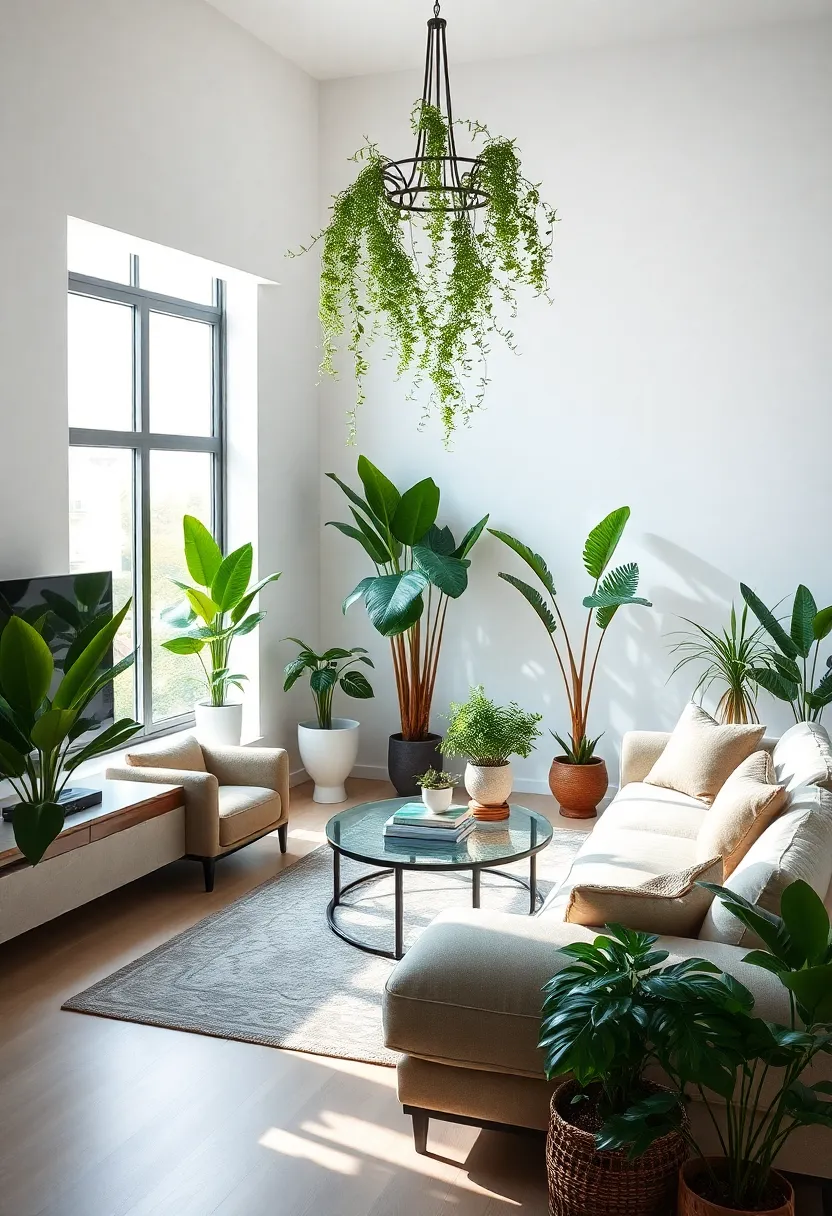
Transforming your living room into a vibrant oasis can be accomplished by strategically incorporating lush greenery. Focal points created by tall indoor plants, like the elegant Fiddle Leaf fig or a striking Bird of Paradise, draw the eye and add a sense of height to the space. Utilizing hanging plants, such as String of Hearts or Spider Plants, can create a dynamic layered effect, adding depth to your decor. Pair these verdant elements with complementary decor pieces, like a textured throw or an artisanal coffee table, to enhance the overall aesthetic.
Incorporate greenery that thrives in your living conditions, considering factors such as light and humidity. Here are a few popular indoor plants that can elevate your living room ambiance:
- Snake Plant – Resilient and air-purifying
- Peace Lily – Elegant with white blooms; thrives in low light
- Pothos – Versatile and easy to propagate
- ZZ Plant – Tolerant of neglect and low light conditions
| Plant Type | Light Requirement | Watering Frequency |
|---|---|---|
| Fiddle Leaf Fig | Radiant, indirect light | Weekly |
| Spider Plant | Bright, indirect light | Every 1-2 weeks |
| Peace Lily | Low to bright, indirect light | Every 1-2 weeks |
| ZZ Plant | Low light | Every 2-3 weeks |
The Art of Selecting Diverse plant Varieties for a High-End Look
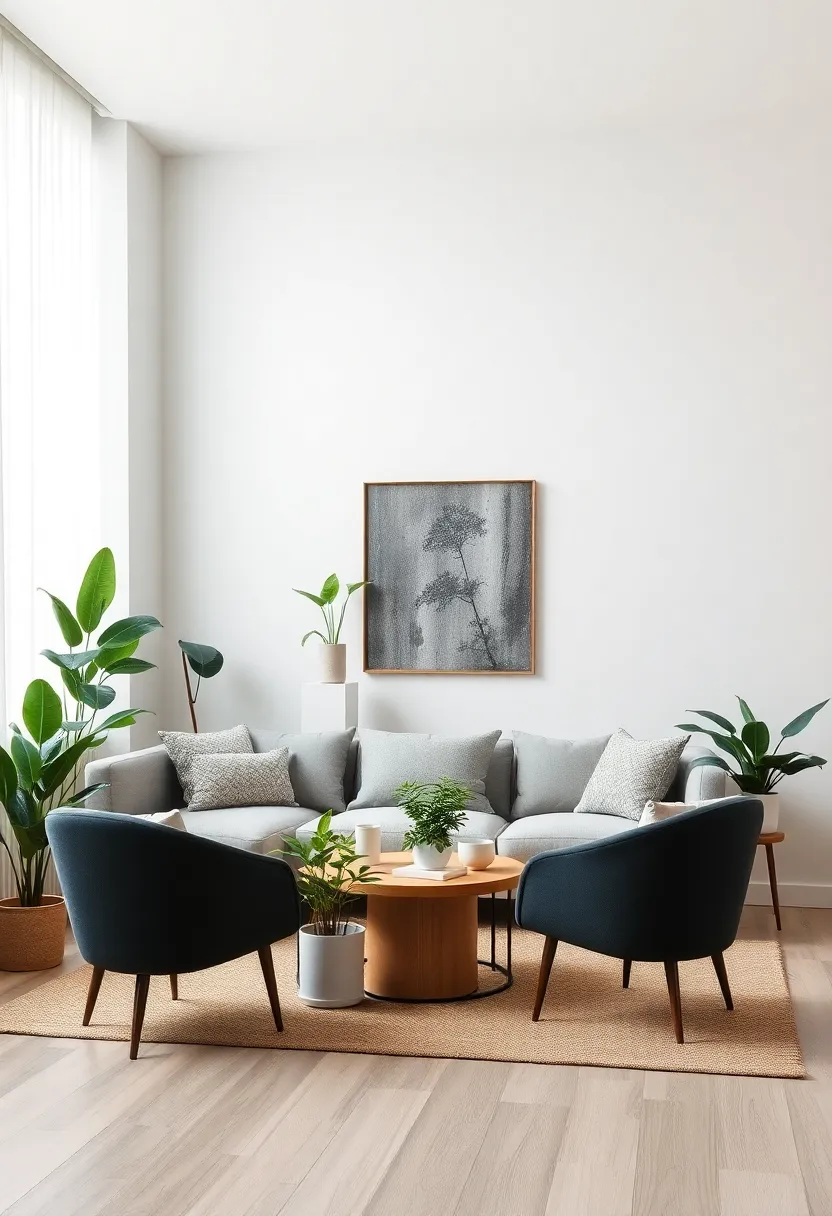
Choosing a variety of plant species can transform your living space into a sophisticated oasis. When selecting plants, consider incorporating both foliage and floral varieties that contrast in color, texture, and height. This strategy not only adds visual interest but also creates a layered look that feels curated and intentional. Aim for a mix of large statement plants like fiddle leaf figs or rubber plants, paired with smaller accent varieties like succulents or snake plants. Utilize pots in varying materials and finishes—ceramic for a glossy touch, metal for a modern edge, and woven baskets for a cozy vibe—to enhance the overall aesthetic.
In addition to aesthetics, it’s crucial to consider the care requirements of each plant to ensure they thrive in your environment. Group plants with similar lighting and watering needs to simplify maintenance while achieving a cohesive look. Here are some ideal combinations to explore:
| Plant Type | Light Requirement | Ideal Pairing |
|---|---|---|
| Fiddle Leaf Fig | Bright, indirect sunlight | Snake Plant |
| Peace Lily | Low to medium light | ZZ Plant |
| Pothos | Varies; adaptable | Spider Plant |
Creating a Focal Point: Stunning Plant Arrangements in Your Space
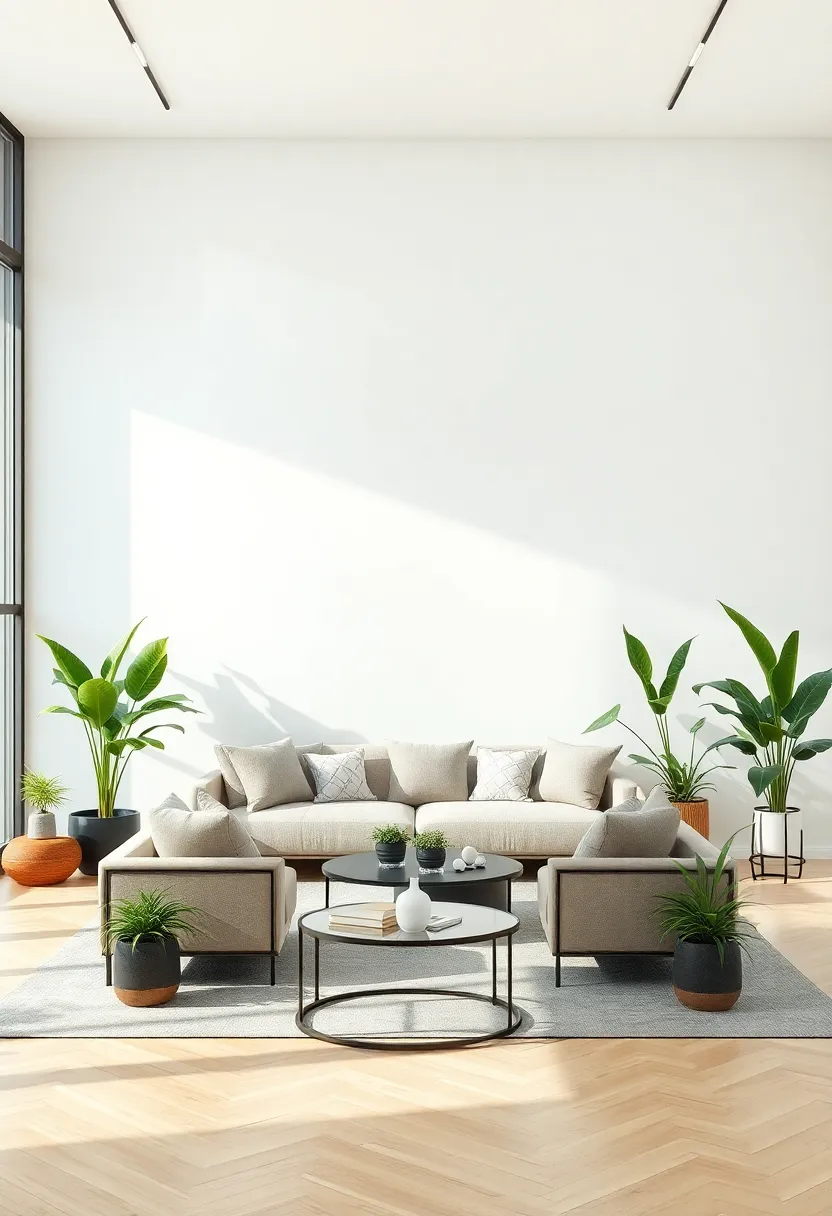
Transform your living room into a serene retreat by skillfully arranging indoor plants that draw the eye and elevate your aesthetic. Start with a central focal point, such as a statement piece like a tall, majestic fiddle leaf fig or a cascading pothos in a stylish planter. Position these plants strategically, considering their height and foliage density to create layers of visual interest.Incorporating different textures and colors not only adds depth but also brings a touch of nature indoors.Consider choosing plants with dramatic leaves, vibrant flowers, or unique shapes to maximize their impact.
To enhance the overall design,incorporate varying pot styles that complement your interiors. Mix and match materials such as terracotta, ceramic, and metallic finishes for an eclectic feel. Use a combination of the following elements:
- Height Variation: Combine tall and short plants to create a dynamic look.
- Color Coordination: Choose pots that echo your color scheme to maintain harmony.
- Lighting Considerations: Place plants where they receive the right amount of natural light.
Furthermore, consider creating a plant table arrangement to showcase a curated selection of smaller plants. The table can feature a few eye-catching succulents or a terrarium to provide a compact yet lovely display.
| Plant Type | Ideal Location | Care Level |
|---|---|---|
| Fiddle Leaf Fig | Bright corners | Moderate |
| Pothos | Shelves & Hanging | Easy |
| succulents | Coffee table | Low |
Combining Structural Elements: How Pots and Planters Impact Design
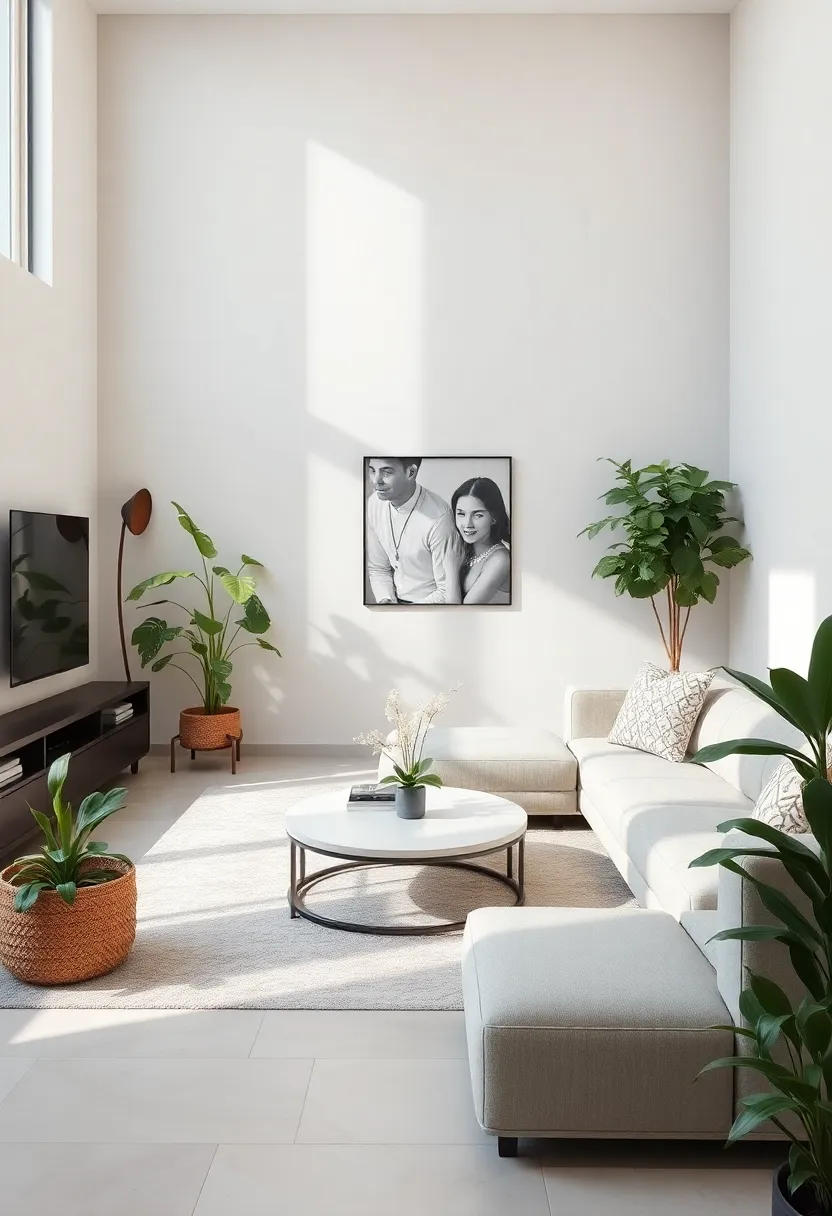
When integrating indoor plants into a high-end living room design, the choice of pots and planters can greatly influence the overall aesthetic. Materials such as ceramic, metal, or concrete not only serve functional purposes but also enhance the decor. Consider selecting planters that align with the room’s style, such as sleek, minimalist designs for a modern space or ornate details for a more traditional setting. The color palette of the planters should complement the furnishings and wall colors, allowing the greenery to stand out while seamlessly blending into the environment.
Along with choice and design, the placement of pots is crucial. Strategically decided locations can create points of interest and layers within the room. Consider these options:
- Grouping small plants on shelves for a dynamic display
- Using tall planters in the corners to draw the eye upward
- Incorporating hanging planters to add dimension and softness
To showcase the various materials and styles, the table below highlights popular pot options for different design aesthetics:
| Material | Style | Best For |
|---|---|---|
| Ceramic | Classic | Traditional and elegant spaces |
| Concrete | Industrial | modern and urban environments |
| Metal | Minimalist | Sleek, contemporary designs |
Natural Textures: Incorporating Unique Planters to Enhance Elegance
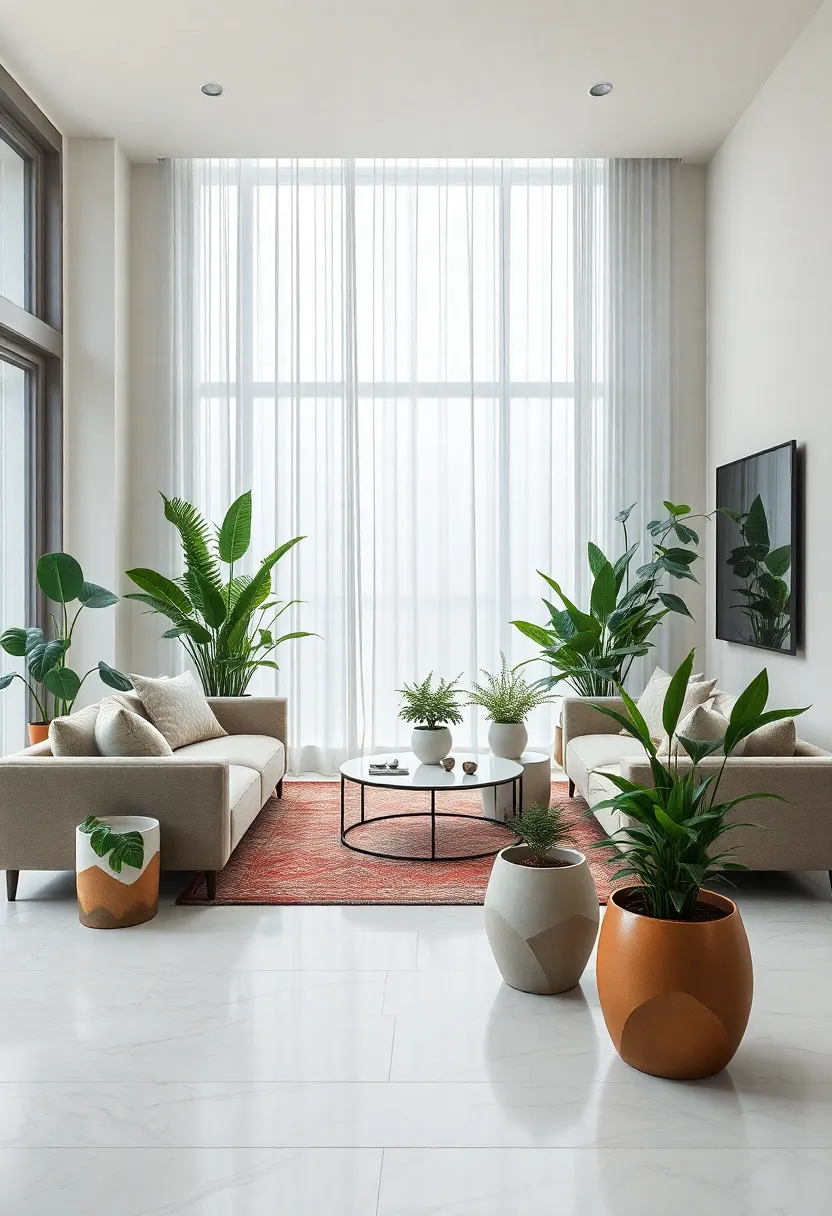
In the world of interior design, the inclusion of unique planters can significantly elevate the visual appeal of your living space. Opt for materials that boast natural textures, such as raw ceramics, aged terracotta, or woven wicker. These elements not only serve as stylish containers for your indoor plants, but they also create a conversation around organic beauty. Consider incorporating planters that feature various shapes and sizes, as this can add depth and dimension to your layout, allowing greenery to harmoniously blend with furniture while drawing the eye across the room.
To further refine your aesthetic, choose planters with intricate patterns or artisanal finishes that echo the design ethos of your living room. Mix and match different heights and designs, placing taller planters near low-profile furniture and using smaller pots as accent pieces on shelves or coffee tables. Glass terrariums or metallic bowls can introduce a touch of sophistication, catching light and reflecting it throughout the space. Below is a concisely curated list of planter materials to consider for your elegant living room:
- Natural Wood: Adds warmth and texture.
- Stone or Concrete: Provides a solid, minimalistic look.
- Fiberstone: Durable and lightweight choice with an earthy vibe.
- Textured Ceramics: Offers a unique, artistic touch.
The Role of Light: Strategic Plant Placement for Maximum Impact
Light is an essential component in the art of indoor gardening, influencing not just the growth of plants but also their aesthetic contribution to your living space. To create a stunning visual impact, consider the following placement strategies:
- Window Sills: Utilize south-facing windows for sun-loving plants like succulents and cacti.
- Corner Spots: Bright,indirect light is ideal for ferns or snake plants,which thrive in lower light conditions.
- Bookshelves: Incorporate trailing plants, such as pothos, to cascade elegantly down shelves.
To maximize the effect of light on your plants’ vibrancy and longevity,understand the different light zones in your home. Below is a simple guide:
| Light Zone | Ideal Plants | Tips |
|---|---|---|
| bright Direct | Cacti, Succulents | Rotate pots regularly for even growth. |
| Medium Indirect | Pothos, Spider Plants | Avoid placing too close to windows during summer. |
| Low Light | ZZ Plants, Snake plants | Minimal watering; low maintenance. |
Integrating Color Palettes: Harmonizing Plants With Your Interior decor
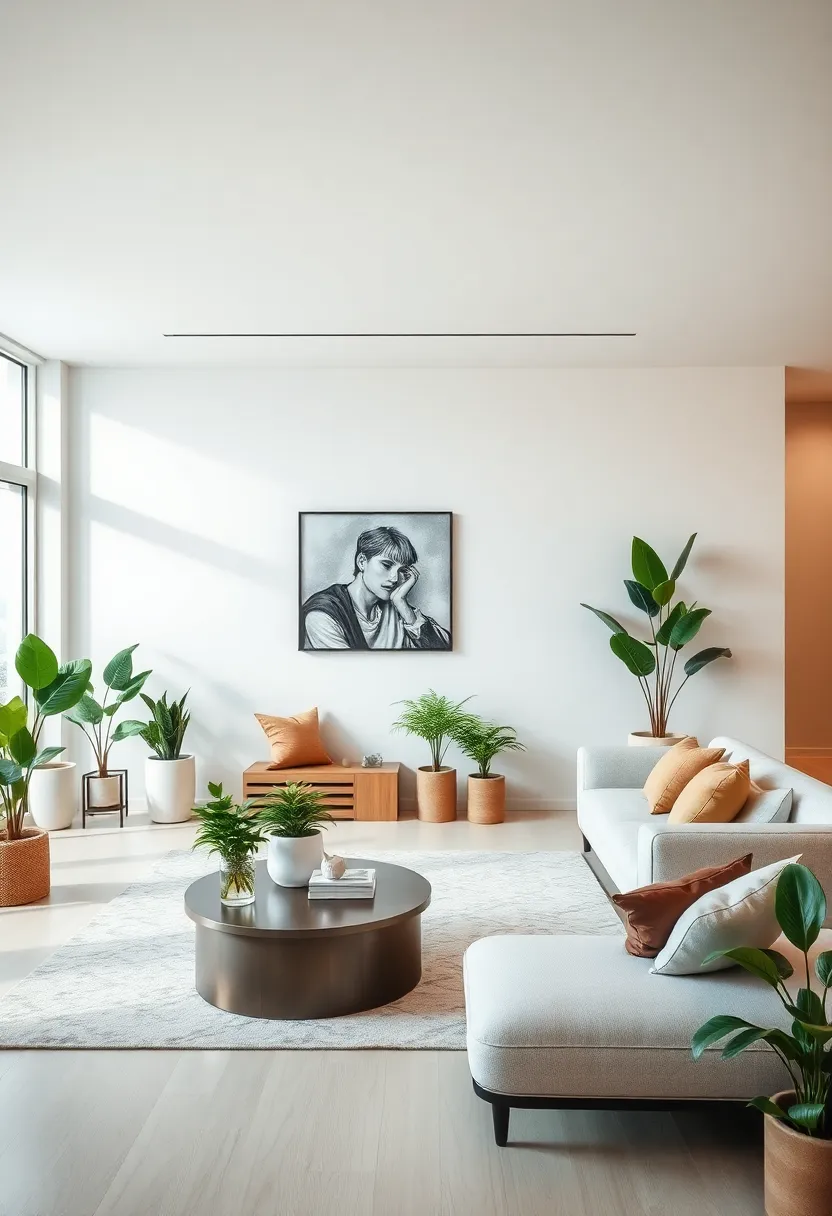
Achieving a harmonious blend of plants and decor revolves around a carefully curated color palette that complements your interior theme. Start by identifying the dominant colors in your living room, such as the shades of your walls, furniture, and accessories. Then, select plants with foliage and blooms that resonate with those hues. As an example, if your space features cool tones like blues and grays, consider incorporating plants with vibrant greens and white or purple flowers to create an eye-catching contrast. Additionally, consider the container choices: ceramic pots in earthy tones or sleek metallic finishes can enhance the overall aesthetic while securing the plants’ roles as central decorations.
To bring coherence to your design, take advantage of the principles of color theory. Use a color wheel to identify complementary or analogous colors that can create a stunning focal point. such as, warm-toned plants, such as coppery philodendrons or golden pothos, can elevate spaces dominated by neutrals or cool shades. Create small vignettes that celebrate these plant colors against your interior color scheme. here’s a simple guide that illustrates this concept:
| Plant Color | Complementary Decor Colors |
|---|---|
| Deep green Foliage | Rust, Coral |
| Bright Yellow Blooms | Navy Blue, Charcoal |
| Soft Lavender Flowers | Cream, Dusty Pink |
Textures and Layers: Building Visual Interest With Plant Placement
Incorporating plants into your living room design is a fantastic way to enhance both its visual appeal and ambiance. One effective technique is to utilize textures and layers through strategic plant placement. By combining various types of plants, you can create a stunning three-dimensional effect that draws the eye around the room. Consider mixing fuzzy leafed plants, such as African violets, with the sleek leaves of a snake plant. this contrast not only adds depth but also fosters a sense of balance and cohesion.
Another way to achieve visual interest is to use plant stands and hanging planters to introduce height variation. Utilize shelves, window sills, or even hanging macramé designs to present your plants at different levels. Here’s a simple checklist to help guide your arrangement:
- Layer height: Place taller plants behind or on stands, with shorter plants in front.
- Create focal points: Use a statement plant, like a fiddle leaf fig, as a centerpiece.
- Group in threes: Cluster plants in three to create natural symmetry and interest.
| Plant Type | Texture | Ideal Location |
|---|---|---|
| Snake Plant | Smooth, upright | Behind a sofa |
| Pothos | Trailing, lush | On a shelf or hanging |
| Fern | Feathery, delicate | In a corner or near light |
Balancing Elements: Pairing Indoor Plants With Furniture and Decor

To create a harmonious atmosphere in your living room, it’s essential to thoughtfully combine indoor plants with furniture and decor elements. Selecting plants that align with the style of your furnishings can elevate the overall aesthetic,creating a luxurious and cohesive environment. As an example, a sleek modern sofa pairs beautifully with minimalist succulents displayed in elegant geometric planters, while a vintage armchair can be complemented by trailing peace lilies in woven baskets. Consider the color palette of your space; vibrant plants can add a splash of energy against neutral-toned furniture, while softer green hues can enhance a more subdued, tranquil vibe.
Beyond simply matching aesthetics,the placement of plants can interact with various furnishings to create visual interest and depth. Strategically position taller plants like fiddle-leaf figs next to low-profile coffee tables to draw the eye upward,or include small indoor herbs on kitchen shelves for a welcoming touch. Use plants as natural dividers to break up larger rooms, allowing elements of surprise and intrigue throughout the space. Here are some key pairings to consider:
| Plant Type | Complementary Decor |
|---|---|
| Snake plant | contemporary console table |
| Boston fern | Vintage wooden bookshelf |
| rubber Plant | Modern art prints |
| Orchids | Elegant chandelier |
Creating Vertical Gardens: Maximizing Space With Green Walls

transforming a blank wall into a lush vertical garden is an inventive way to introduce greenery into your living space. By utilizing modular planters, you can create a stunning display that not only serves as a focal point but also enhances the ambiance of your high-end living room. Consider incorporating a variety of plants with different textures and colors for visual interest. Some excellent candidates include:
- Ferns – Their feathery leaves add softness.
- Succulents – Provide a modern look and require minimal maintenance.
- Epiphytic orchids - Add elegance and exotic flair.
To maximize the vertical space, incorporate an effective irrigation system to ensure all plants thrive without excessive upkeep. Vertical gardens can also improve indoor air quality, making them a functional addition to your stylish decor. Use an aesthetically pleasing backdrop, such as:
| Backdrop Options | Benefits |
|---|---|
| Natural wood | warmth and texture |
| Painted canvas | Pops of color, easy to change |
| Metal grids | Modern, industrial feel |
Reflecting Style: Choosing Plants That Match Your Aesthetic Vision
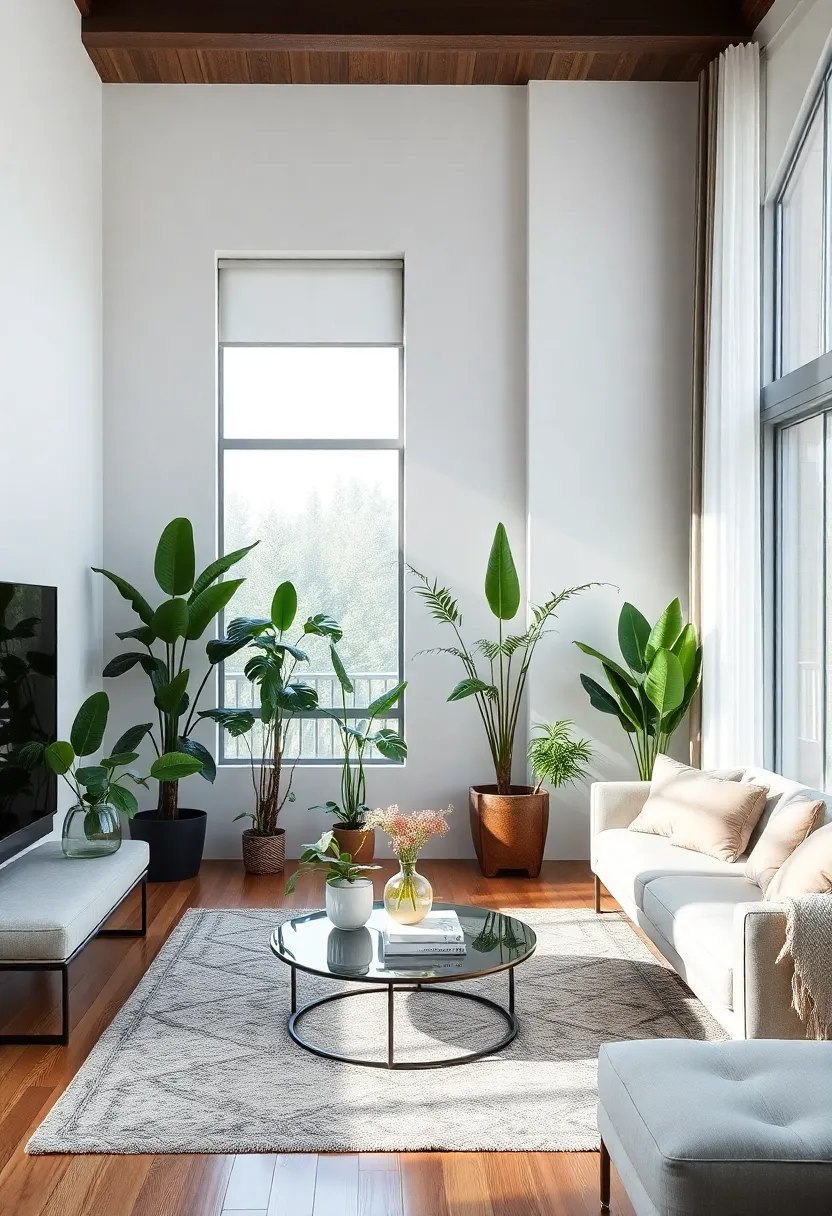
Creating a harmonious space involves a delicate balance between your personal style and the natural world. When selecting plants, consider their colors, shapes, and sizes to ensure they complement your existing decor. Think about incorporating varieties that reflect your aesthetic vision,such as:
- Succulents: Their geometric forms and diverse hues can add a modern touch.
- Fiddle Leaf Figs: With their broad,glossy leaves,these trees offer a touch of elegance.
- Peace Lilies: Their lush foliage and delicate white blooms bring a serene vibe.
Additionally, placing the right plants in curated containers can enhance their visual impact. Choose planters that resonate with your interior’s color palette and style—whether its sleek ceramic pots for a contemporary look or rustic terracotta for a more earthy feel. Consider integrating items like:
| Planter Style | Ideal Plant Types |
|---|---|
| Sleek Ceramic | Succulents, Cacti |
| Wooden Baskets | pothos, Snake Plants |
| Metal Planters | ZZ Plants, Fiddle Leaf Figs |
incorporating Accessories: Elevating Plants With Stylish Accents

When it comes to making a statement with your indoor plants,the right accessories can transform an ordinary display into a stunning focal point. Consider pairing your greenery with unique planters that add a touch of sophistication and personality to your living room.Materials such as ceramic, terracotta, or even metallic finishes can complement the texture of the leaves, creating a visual contrast that draws the eye. Enhance the aesthetic further with stylish trays or plant stands that mimic your interior decor’s style, be it modern, vintage, or eclectic.
Additionally, the use of accessories like decorative pebbles, moss, or colorful stones can introduce a fresh element to the soil, while also enabling better drainage and moisture control. Don’t overlook lighting accents—strategically placed pendant lights or wall sconces can highlight your plant arrangements, showcasing their beauty. Consider utilizing a mix of high and low focal points by incorporating hanging planters or wall-mounted displays. This layering effect creates depth and intrigue, encouraging guests to explore every corner of your exquisite living room.
Seasonal transitions: Infusing Your Space With Seasonal plant Choices
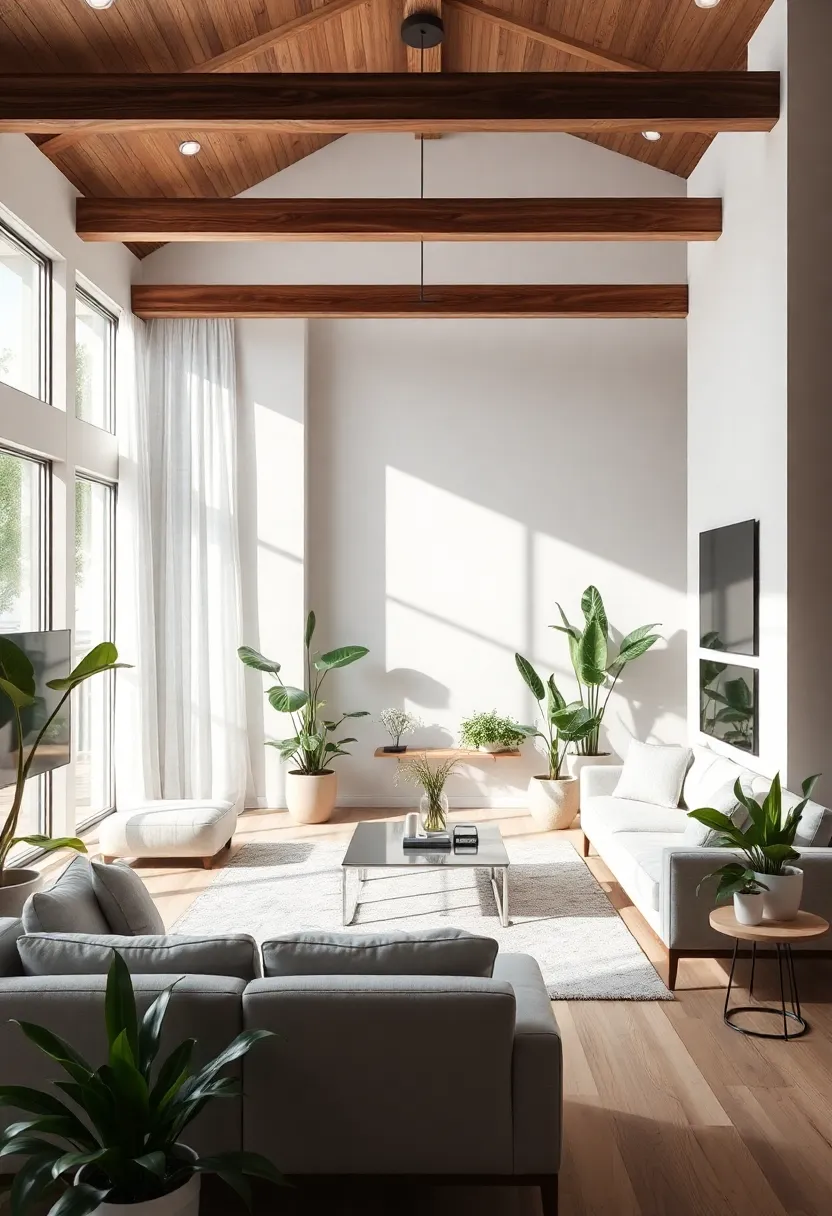
As the seasons shift, so too can your indoor atmosphere. Embracing seasonal plants allows you to create a dynamic and rejuvenating environment that reflects the passing months. For spring, consider introducing vibrant flowering plants like orchids or hydrangeas, which can add bursts of color and vitality to your living room. In the summer, fresh herbs such as basil, mint, and rosemary not only brighten your space but also contribute delightful scents. Autumn invites rich, warm tones with plants like the Mums or Cabbage Plants, while winter can be adorned with evergreens and festive poinsettias that embody the season’s spirit.
When selecting plants, think about the aesthetic and ambiance you want to create. Here are some recommendations to help you mix and match:
- Color Palette: choose plants that complement your current decor.
- Texture Variety: Incorporate both leafy and flowering plants for depth.
- size Matters: Use larger plants as statement pieces and smaller ones for accents.
To help visualize your options, here’s a simple table outlining seasonal plant choices:
| Season | Plant Choice | Features |
|---|---|---|
| Spring | Orchids | Elegant blooms, vibrant colors |
| Summer | Basil | Fragrant, culinary use |
| Autumn | Mums | Rich hues, hearty blooms |
| Winter | Poinsettias | Festive foliage, pops of red |
Bringing Nature Indoors: How Plants Enhance Comfort and Relaxation
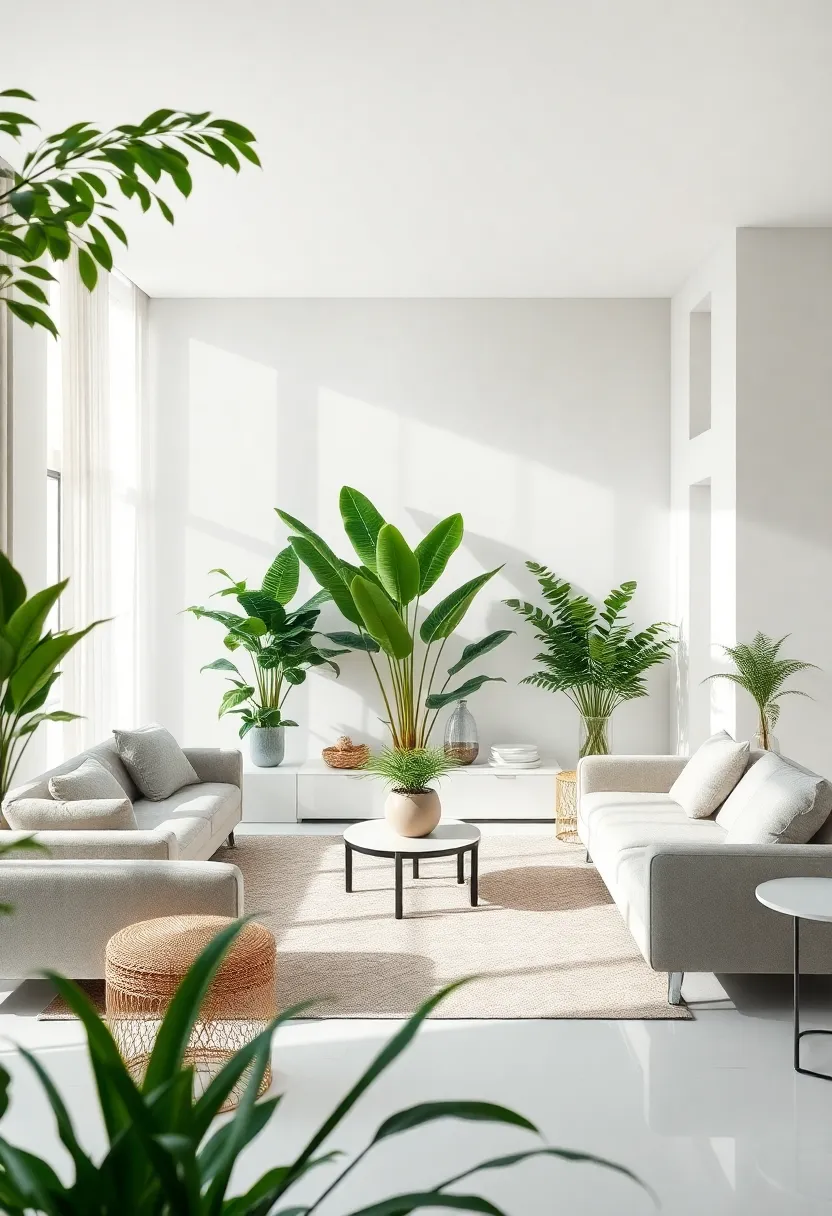
Incorporating indoor plants into your living space transforms it into a serene retreat, nurturing a sense of calm and tranquility. These natural elements not only enhance aesthetic appeal but also promote emotional well-being. By selecting the right plants, you can create an environment that fosters relaxation and comfort, helping to alleviate stress after a long day. Consider introducing species such as:
- Snake Plant – known for its air-purifying qualities and resilience.
- Pothos – with its trailing vines, adds a touch of lushness and is low-maintenance.
- Peace Lily – celebrated for its beautiful blooms and ability to thrive in low light.
- Boston Fern – an excellent choice for humidity and purifying the air.
Creating a harmonious balance between design and nature enhances not only the visual aspect but also the overall ambiance of your living room. to achieve this, arrange your plants in varying heights and textures, complementing your existing furnishings. A strategically placed coffee table centerpiece featuring a combination of small succulents and larger floor plants can act as a focal point, drawing the eye while providing a refreshing burst of greenery. Consider using decorative pots in organic materials like ceramic or woven baskets to elevate the decor. Below is a simple guide outlining the ideal plant placement in your living room:
| Location | Recommended Plants | Benefits |
|---|---|---|
| Near Windows | Fiddle Leaf Fig,Aloe Vera | Maximizes sunlight and air quality |
| coffee Table | Small Succulents,Air Plants | Adds charm without overwhelming space |
| Floor Corners | Rubber Plant,Dracaena | Creates an inviting,layered look |
Creating Serenity: The Calming Effects of Indoor Plant Design
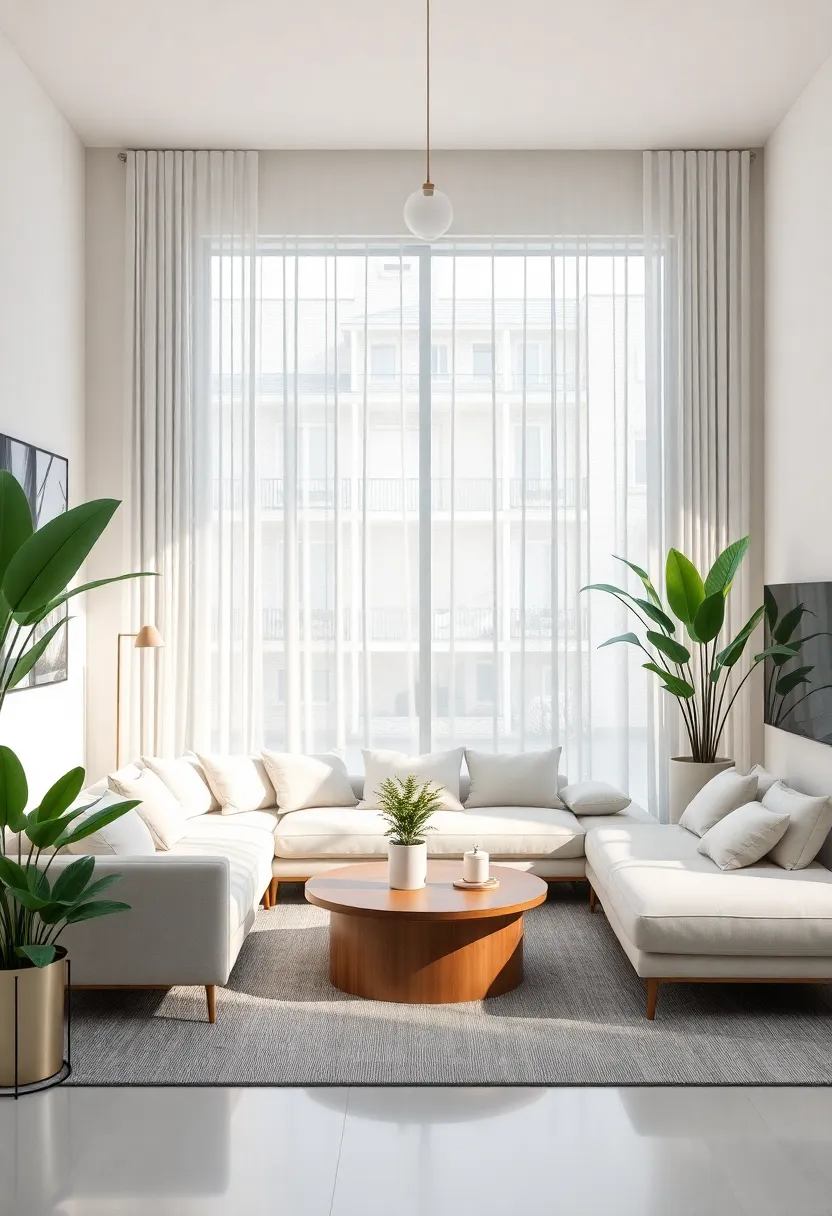
Integrating indoor plants into your living room design can transform the ambiance and create a peaceful retreat.The right selection of greenery not only enhances aesthetics but also promotes a sense of calm and well-being.Consider incorporating plants that thrive in indoor environments, such as:
- Peace Lily – Known for its air-purifying qualities and beautiful white blooms.
- Snake Plant – its striking vertical leaves add a modern touch while improving air quality.
- Pothos - An adaptable vine that drapes elegantly, perfect for shelves or hanging displays.
To maximize the calming effects of your plants, consider arranging them in thoughtfully designed spaces with ample natural light and complementary décor. Grouping plants of varying heights can create a layered look, drawing the eye and instilling a sense of tranquility. Here’s a quick reference for optimal plant placement in your living room:
| Plant Type | Best Placement | Light Requirements |
|---|---|---|
| Fiddle Leaf Fig | Corner near a window | bright, indirect light |
| Aloe Vera | Tabletop or shelf | Direct sunlight |
| Rubber Plant | Mid-room or floor | Low to bright, indirect light |
Artful Grouping: Arranging Plants for a Cohesive Look
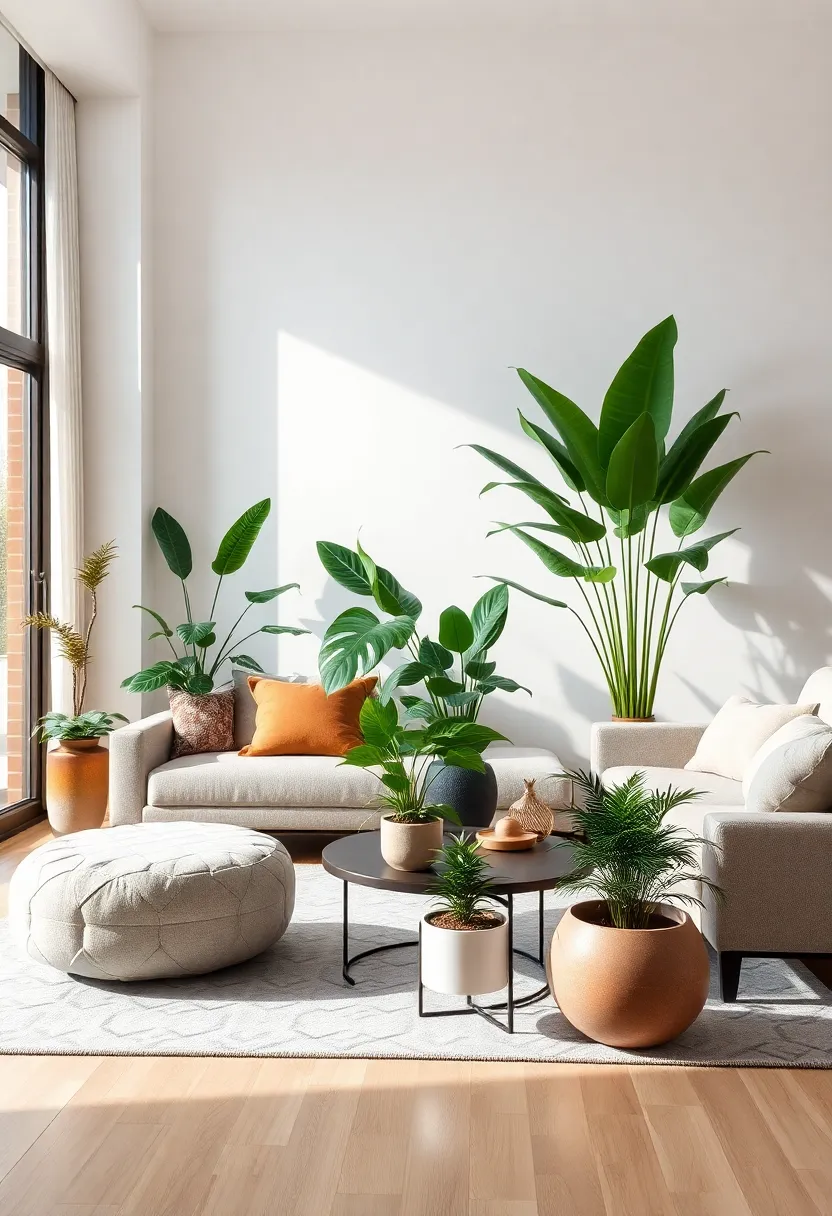
To create a visually striking atmosphere in your living room, consider the artful grouping of your indoor plants.start by selecting a variety of plant heights and textures to add depth and interest. As an example, place taller plants such as Fiddle Leaf Figs or Snake Plants at the back or in the corners, while medium-sized plants like ZZ Plants or Pothos can occupy mid-foreground areas. accent the arrangement with smaller plants, such as Succulents or Air Plants, to draw the eye and add a playful touch. This layered placement not only enhances visibility but also creates a dynamic flow throughout your space.
Along with height, consider the color palette and foliage texture of your plants to ensure a cohesive look. Group plants with similar leaf shapes, such as broad-leaved with narrow-leaved, or those with variegated patterns next to solid greens.Experiment with triangular or circular arrangements to guide viewers’ attention naturally. You might also find it effective to use decorative plant stands or baskets to elevate your plants, introducing different levels and visual breaks. Here’s a quick reference table of plant pairings that work beautifully together:
| Plant Pairing | Height Variation |
|---|---|
| Fiddle leaf Fig + ZZ Plant | Tall + Medium |
| Pothos + Succulents | Medium + Small |
| Snake Plant + Air Plants | tall + Very Small |
| Rubber Plant + Spider Plant | Medium + Medium |
Architectural Plants: Using Structure to Define Your Space
Incorporating architectural plants into your high-end living room can dramatically alter the perception of space while adding a touch of elegance. These plants are not just decorative; they serve as living sculptures, creating visual focal points that draw the eye and enhance the overall design. Consider using large statement plants, such as fiddle-leaf figs or rubber trees, which can fill vertical space and create a striking contrast against sleek furniture lines. For a more layered effect, integrate assorted smaller plants in carefully curated clusters, allowing different heights and forms to play off one another, drawing guests into the ambience of your space.
When selecting plants, think about their structural qualities and how they complement your décor. Opt for varieties with engaging leaf shapes, colors, and textures that resonate with your design scheme. Here are a few suggestions for architectural plants and their attributes:
| Plant Type | Height | Light Requirements | design Element |
|---|---|---|---|
| Fiddle-Leaf Fig | 5-10 feet | Bright, indirect light | Vertical elegance |
| ZZ Plant | 2-3 feet | Low light | Sleek and modern |
| Snake Plant | 1-4 feet | Adaptable | Geometric lines |
| Monstera | 3-6 feet | Bright, indirect light | Bold statement |
By pairing these plants with thoughtfully selected furniture and accessories, you can achieve a harmonious balance that encapsulates both style and serenity. Consider including plant stands or shelves to elevate your greenery, creating dynamic levels and enhancing the spatial experience. The strategic use of architectural plants not only defines your living room’s style but also contributes to a calming and inviting atmosphere, perfect for relaxation and social gatherings alike.
Sustainable Choices: Exploring Eco-Friendly plant Options for Spaces
Incorporating eco-friendly plant options into your living room not only enhances the aesthetic appeal but also contributes positively to the environment. Choose plants that require minimal resources while providing maximum impact. Consider the following options:
- Snake Plant: Known for its air-purifying properties and resilience, it thrives in low light and needs little water.
- Pothos: A fast-growing vine that can be trained to climb or cascade, perfect for adding greenery to shelves or hanging planters.
- ZZ Plant: This low-maintenance option has glossy leaves and can tolerate neglect, making it ideal for busy lifestyles.
- Spider Plant: A natural air purifier that produces offshoots, allowing you to propagate new plants easily.
When selecting plants,consider utilizing sustainable materials for pots and accessories. Look for options made from recycled materials or sustainably sourced resources. Here’s a simple comparison of various eco-friendly planter types:
| Planter Type | Material | Sustainability Rating |
|---|---|---|
| Ceramic Planter | Recycled Clay | ★★★☆☆ |
| Bamboo Planter | Sustainable Bamboo | ★★★★☆ |
| Wooden Planter | Reclaimed Wood | ★★★★★ |
| Plastic Planter | Recycled Plastic | ★★☆☆☆ |
This thoughtful approach not only adds a touch of luxury to your space but also promotes a greener planet, ensuring your high-end living room aligns with sustainable living practices.
The Power of Aroma: selecting Fragrant plants to Enrich Ambiance
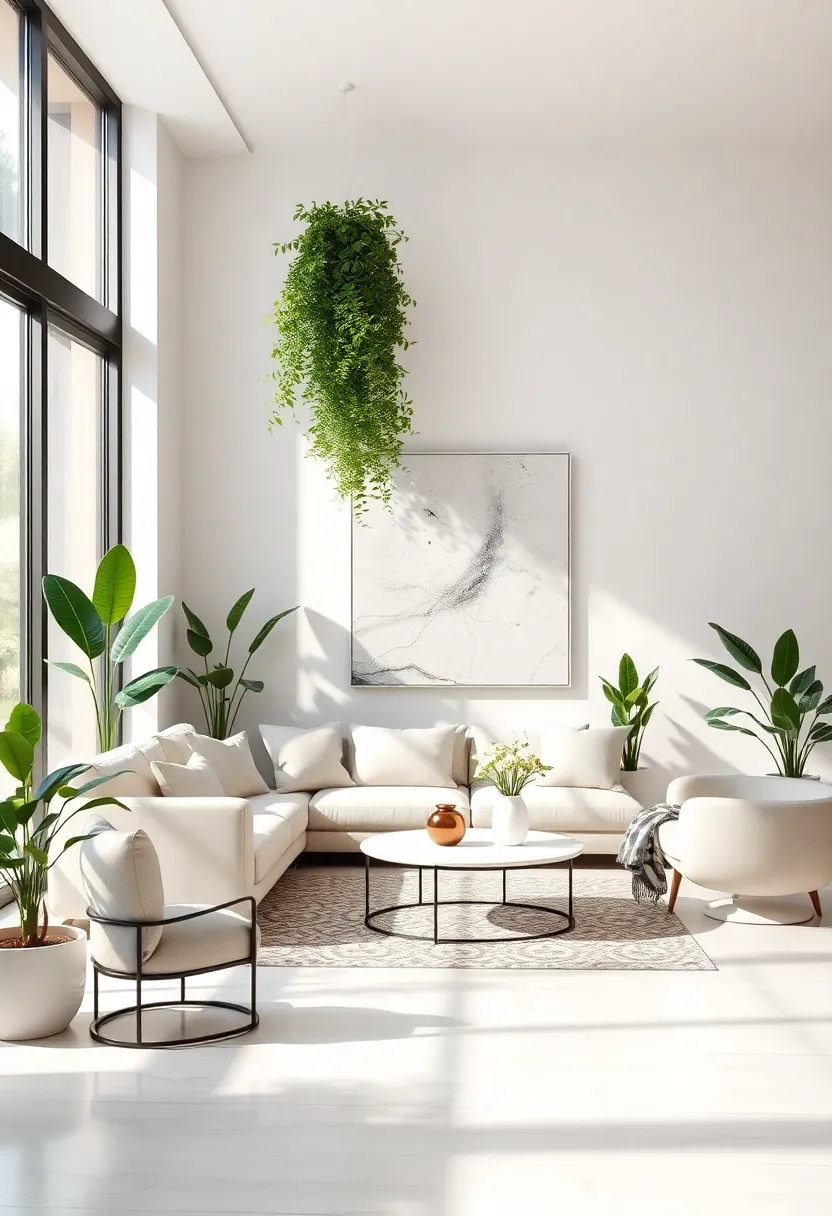
Dive into the enchanting world of fragrance by selecting aromatic plants that not only beautify your living space but also enrich the atmosphere with captivating scents.When curating your indoor garden, consider incorporating plants like lavender, known for its calming properties, or jasmine, which fills the air with a sweet, romantic aroma. These botanical elements not only contribute to the aesthetics of your high-end living room but also create an inviting environment that encourages relaxation and social interaction.
To help streamline your selection process, here’s a concise overview of some top fragrant plants that harmonize well with sophisticated decor:
| Plant | Scent Profile | Care Level |
|---|---|---|
| Rosemary | Herbaceous, refreshing | Easy |
| Mint | Cool, invigorating | Moderate |
| Peppermint | Sweet, sharp | Moderate |
| Gardenia | Rich, sweet | Challenging |
| Citrus Trees | Zesty, uplifting | Moderate |
By integrating these fragrant plants into your design, you not only enhance the visual appeal of your living room but also create a sensory experience that lingers long after guests have departed.Strategic placement—in areas where airflow circulates or near seating arrangements—maximizes the impact of their fragrances and reinforces the upscale ambiance you wish to cultivate.
Dynamic Spaces: Rotating Seasonal Plants for a Fresh Look Throughout the Year
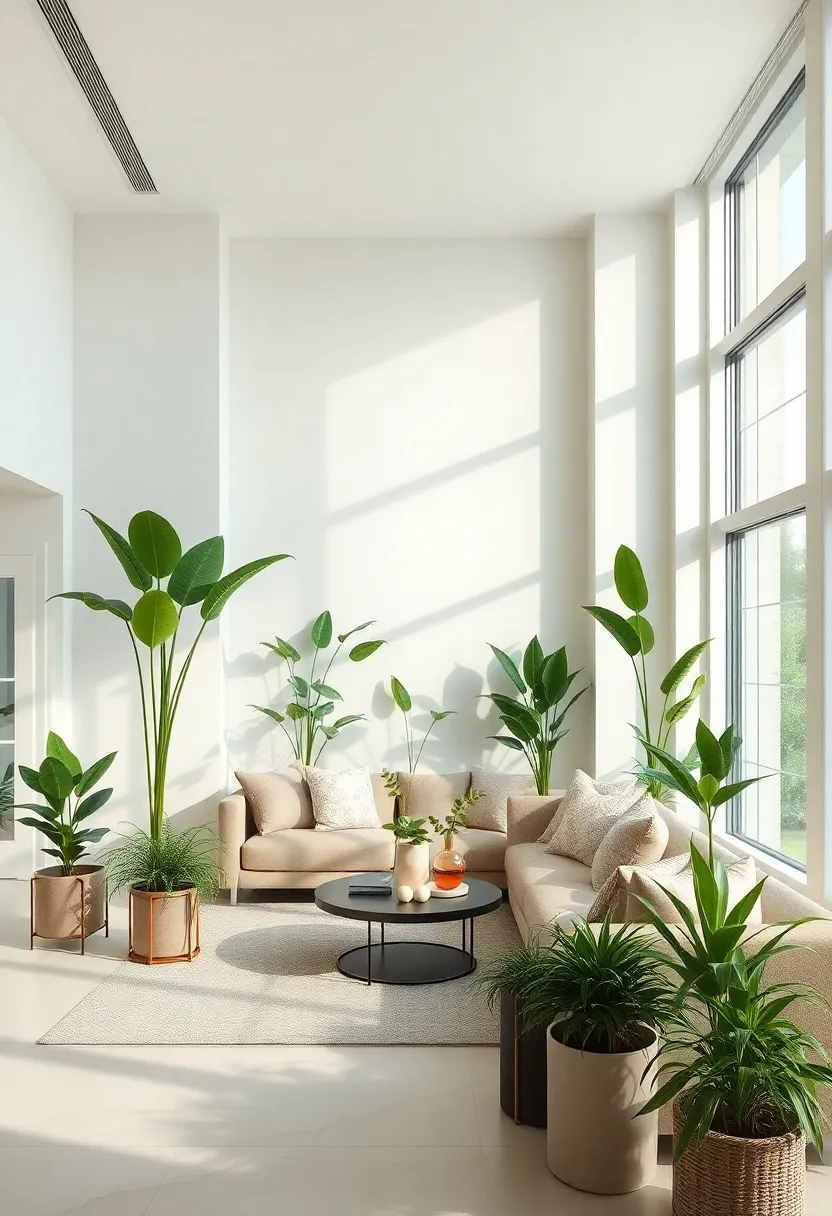
Transforming your living space with seasonal plants invites a refreshing vibe that evolves with each new month. By incorporating versatile selections that thrive in different seasons, you can create an ever-changing focal point for your indoor oasis. Consider the following plant combinations that effortlessly adapt with the seasons:
- Spring: Brighten your room with Geraniums and Tulips for a burst of color.
- Summer: Bring in Succulents and Fiddle Leaf Figs for a lush, tropical feel.
- Autumn: use Chrysanthemums and Ornamental Grasses to reflect the warm hues of fall.
- Winter: Incorporate Poinsettias and Christmas Cactus to add holiday cheer.
Creating a dynamic visual experience is about more than just the plants themselves; it also involves thoughtful arrangement.Utilize stylish planters that resonate with your living room aesthetic, and consider varying heights to add interest.Tables and shelves can serve as perfect platforms for layering plants in intriguing compositions.Below is a simple guide to help you choose the perfect pots to match your decor:
| Plant Type | Best Pot Material | Recommended Size |
|---|---|---|
| Succulents | Ceramic | 4-6 inches |
| Fiddle leaf Fig | Wood | 12-16 inches |
| Poinsettias | Metal | 6-8 inches |
| Chrysanthemums | Plastic | 8-10 inches |
Designing for All Seasons: Year-round indoor Plant Inspirations
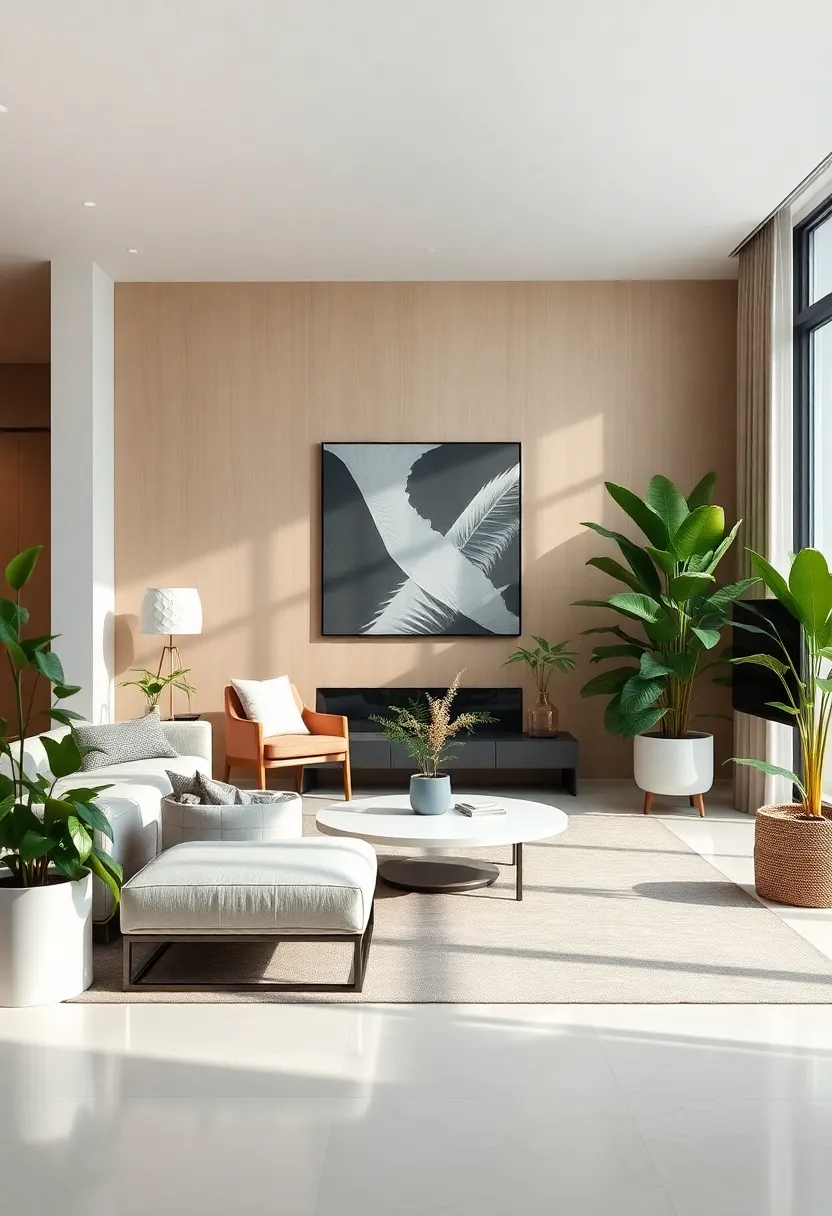
When considering indoor plants for your living space, it’s essential to select varieties that not only complement your aesthetic but also thrive throughout the changing seasons. For a high-end living room, think about integrating plants with unique textures and colors that provide visual interest all year long.Choose evergreen varieties, such as the rubber plant and the peace lily, that bring life and vibrancy even in the colder months. In contrast,you can use seasonal favorites like vibrant succulents or cheerful flowering plants during the spring and summer months to freshen up the decor.
To aid in your selection, consider grouping plants by their seasonal appeal. Here’s a succinct overview of plants to feature based on the season:
| Season | Featured plants |
|---|---|
| Spring | – Orchid – African Violet – Pansy |
| Summer | – Fiddle Leaf Fig – Cactus – Succulents |
| Autumn | – Snake Plant – ZZ plant – aeschynanthus |
| Winter | – Pothos – Spider Plant – Philodendron |
Incorporating these plants will not only enhance the natural environment of your living room but also foster a seasonal rhythm that refreshes and rejuvenates your space. Use various plant stands and elegant planters to elevate your indoor garden, adding layers and depth to your design while ensuring every season feels inviting and well-coordinated.
Final Thoughts
As we conclude our journey through the art of designing a high-end living room with indoor plants, it’s clear that the fusion of elegance and nature can transform any space into a sanctuary of tranquility and style. By integrating carefully selected greenery, you can add depth, color, and a touch of life that elevates the overall ambiance of your home. Whether you opt for towering palms, delicate ferns, or a vibrant collection of succulents, each plant tells a story and contributes to the narrative of your space.
The key lies in balance—combining luxurious materials with the organic beauty of nature to create an inviting atmosphere that resonates with sophistication. As you embark on this design endeavor, remember that each element, from plant selection to placement, is an prospect to express your personal style while cultivating a serene environment.
So, take a moment to reflect on how you can weave the charm of nature into your high-end living room, and watch as your space flourishes into a harmonious blend of beauty and elegance. With the right touches, your indoor oasis awaits, ready to inspire and rejuvenate, one leaf at a time.
